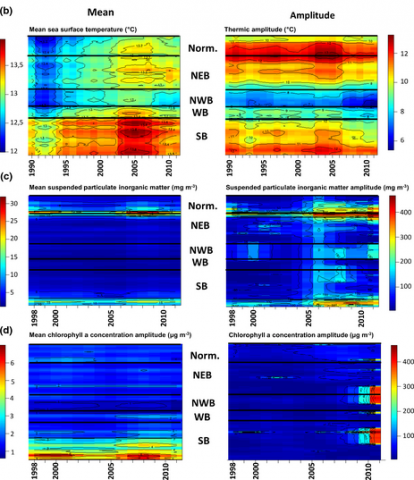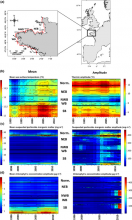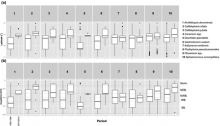
Twenty years of observed and predicted changes in subtidal red seaweed assemblages along a biogeographical transition zone: inferring potential causes from environmental data
R. K. Gallon, M. Robuchon, B. Leroy, L. Le Gall, M. Valero and E. Feunteun. Journal of Biogeography (J. Biogeogr.) (2014) 41, 2293–2306
ABSTRACT
Aim To assess environmental changes within a marine biogeographical transition zone and how they have affected seaweed assemblages and distributions over the past two decades.
Location Brittany (western France, Europe) – a biogeographical transition zone between cold-temperate and warm-temperate regions.
Methods We assessed spatio-temporal variation for three environmental parameters [sea-surface temperature (SST), suspended inorganic matter and chlorophyll a] between 1992 and 2012 in five adjoining regions using generalized linear models. To investigate changes in assemblages and distributional patterns of red seaweeds based on sampling surveys conducted during two separate periods (1992–1998 and 2010–2012), we used two complementary approaches, multivariate data analysis and species distribution models (SDMs) with a set of modelling procedures.
Results Coastal water temperature in Brittany has increased by 0.7 °C on average over the past two decades (0.35 °C per decade). At a finer scale, changes in SST showed that Brittany constitutes a mosaic of contrasting conditions, with the western and north-western regions being colder and less affected by climate change than the other three regions. Our results suggest that increasing SST caused significant changes in subtidal red seaweed assemblages over the 20-year period. Between the two periods, SDMs predicted significant species shifts for seven out of ten representative species, and reductions in the distribution ranges of most species.
Main conclusions Our study confirmed important differences across the different regions of the studied biogeographical transition zone. Changes in abiotic parameters and red seaweed assemblages are expected to occur at varying extremes across these regions, with western and north-western Brittany representing the most stable zones that might constitute a potential refuge for certain species when responding to global changes.
Keywords
Brittany, global change, macroalgal communities, North Atlantic, sea surface temperature, species distribution modelling
Contact BOREA : Eric FEUNTEUN


